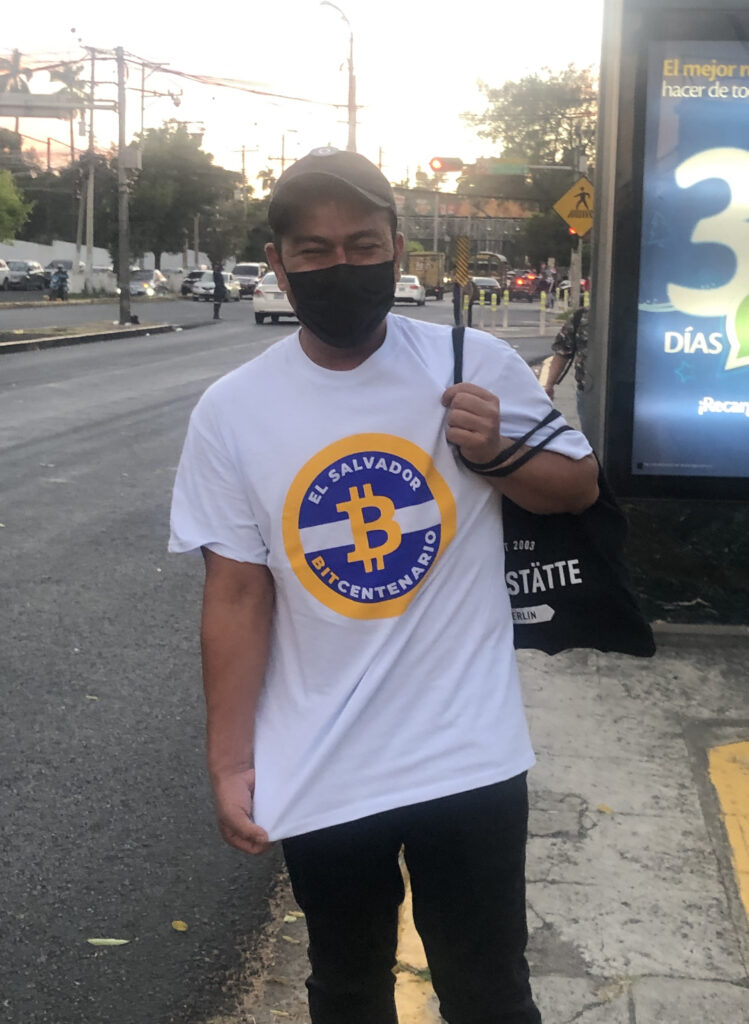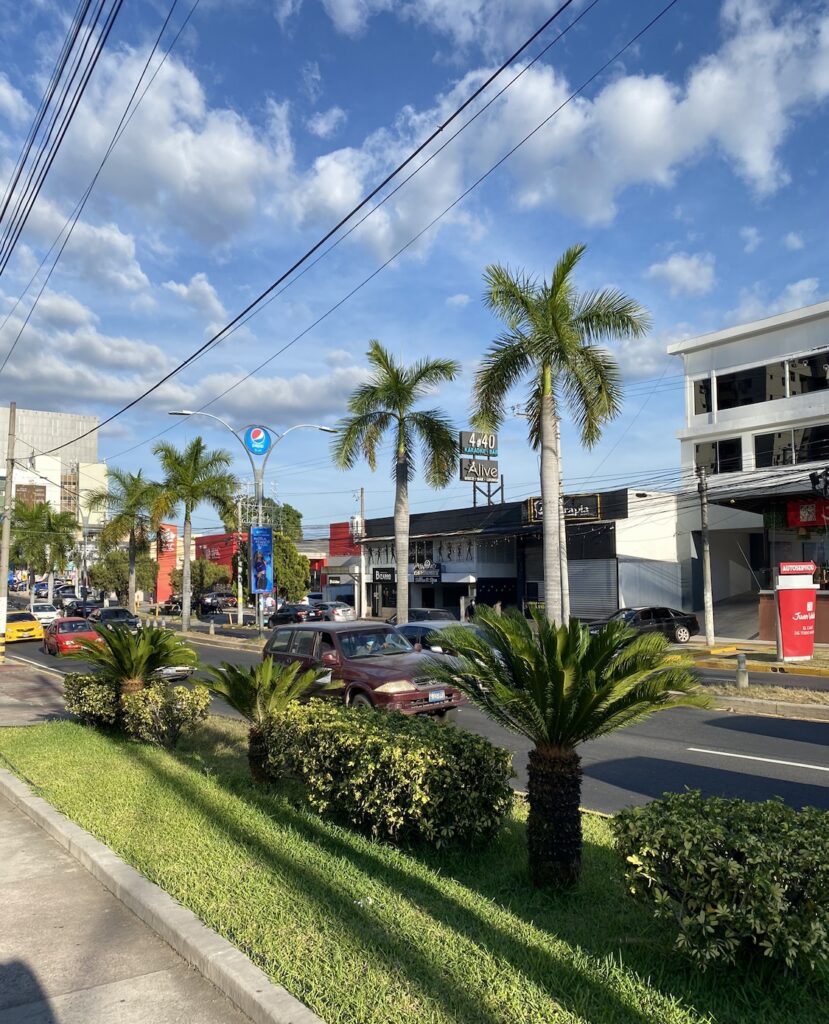- Podcast
- Supportaci
- Blog
- Shopping
- Bitcoin
- Contattaci
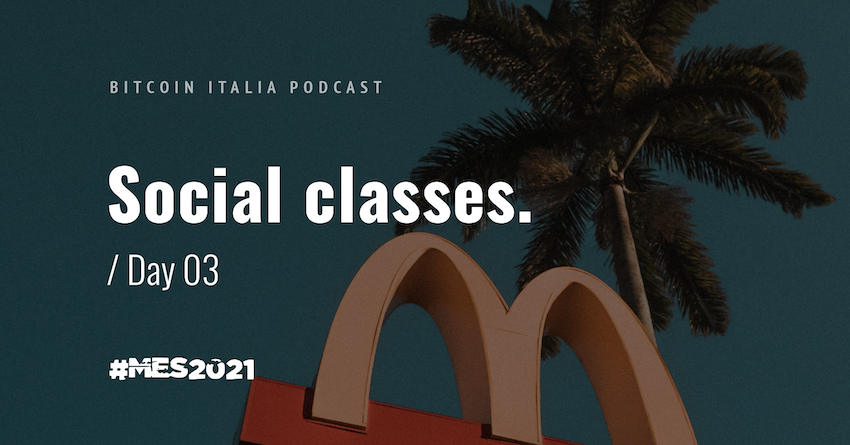
We begin a new day determined to learn more about the flaws of the Chivo wallet and its real adoption by the local population.
The streets of San Salvador are always noisy and full of life. Soon we come across a large supermarket with the Bitcoin logo prominently displayed on the windows. We decide to try our luck. We know that the big stores don’t use the smartphone application, but a dedicated device. A kind of POS, equipped with a touch screen display. Perhaps large retailers have educated the cashiers and clerks to use it properly and to know how to set up a Lightning transaction. We stock up on food, to avoid fasting in the coming days, in case we can’t find a restaurant that accepts bitcoin. We get in line, the supermarket is crowded. There are specific checkouts enabled to receive cryptocurrency payments, several in fact, more than half of them. It looks promising. At the time of payment, however, the cashier shows us the usual on chain QR code. When I try to explain that she should select a Lightning payment because it is faster and cheaper she looks at me as if I was talking in Klingon.
There is nothing to do. We have to pay on chain. The moment the young woman realizes that the transaction is not as instantaneous as using a Chivo wallet she panics and calls a superior. The cashier has to close, waiting for our transaction to be confirmed.
Ten very long minutes. I also try to explain to the other attendant that they are not using the wallet correctly, but they really have no idea what I am talking about. The other waiting customers are shunted to the other tills. They are smiling at us, which is good for them. In Milan we would have taken a lot of insults. I wonder what they think of us.
Back on the road, frustration begins to set in: a month and a half of on-chain payments could be difficult to manage. We decide to try it where we know that Lightning transactions have been properly implemented. On the way we come across a McDonald’s, the opportunity is there and we decide to give it a try. We go in and ask an employee who, very kindly, explains that at the normal checkouts there is the usual Chivo but that in the automatic ones there is a different system, a proprietary one. We get closer. The display shows the golden B of Bitcoin. We enter our order, select the payment method, the machine shows us the QR code and bang: lightning fast. Exactly as it should be.
So much irony. The first Lightning transaction we manage to finalize in the country where Bitcoin claims to be social redemption goes to the wallet of Ronald McDonald, the global symbol of American capitalism and economic imperialism.
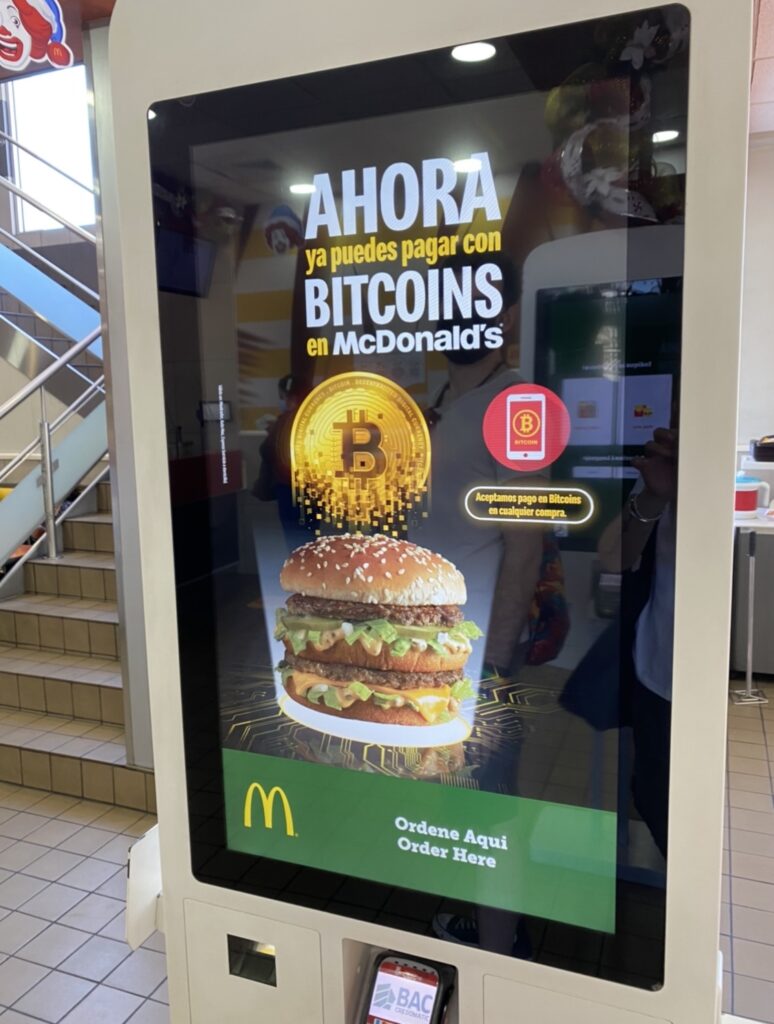
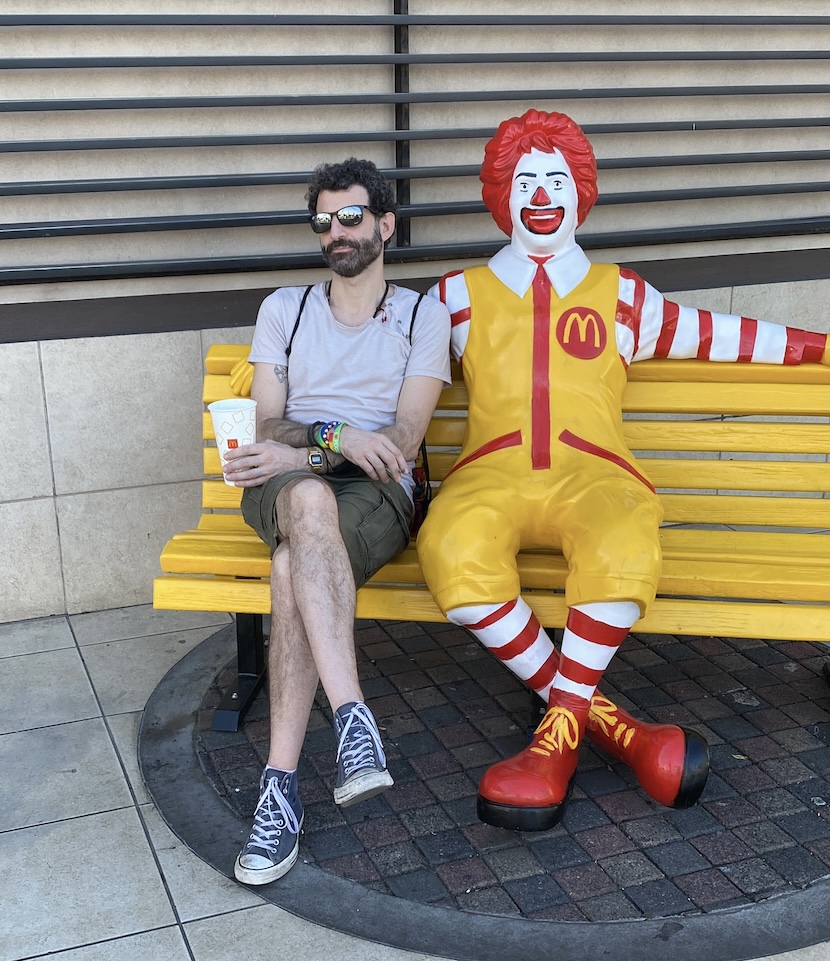
We sit at the table to consume and we realize that the atmosphere is different, something is not right. It doesn’t take us long to realize what. The people around us are wearing designer shoes, polo shirts and ironed shirts, they are sporting big watches and the girls are taking selfies on their shiny iPhones. The Mac in El Salvador is for the rich, and in fact the prices are not far from those in Europe.
This makes us suspicious and we decide to change the city area completely. When we arrived in the capital we decided to set up our base camp in the center of town, which is also the most popular and in some ways the most humble and poor area of the city. Made up of narrow alleys, crumbling walls and crumbling houses. We then head towards the so-called Pink Zone, which is over three kilometers from the center and we know is the area where tourism is concentrated and where the privileged live. Along the way the typical Central American chaos, full of street vendors, bumpy sidewalks and loud horns, but the closer we get to our destination the more the environment changes. The houses become modern and sumptuous villas, surrounded by high walls topped with barbed wire and guarded on sight by armed security personnel. The Zona Rosa is a different San Salvador. Almost orderly.
We have been walking for a long time and we are thirsty. We glimpse a nice place, modern and with a festive mood. We ask if they accept bitcoin and they seat us. We order two cold beers. We deserved it. When it was time to pay the cashier fiddles for a few minutes with a tablet extracted for the occasion and still boxed. Cryptocurrency payments must not be popular here either, but after a while he shows us a QR code generated by a different wallet than Chivo, it’s BtcPay, we recognize at first glance. The transaction is confirmed instantly. Among the privileged of El Salvador Bitcoin is the Lightning Network. Exactly as it should be.
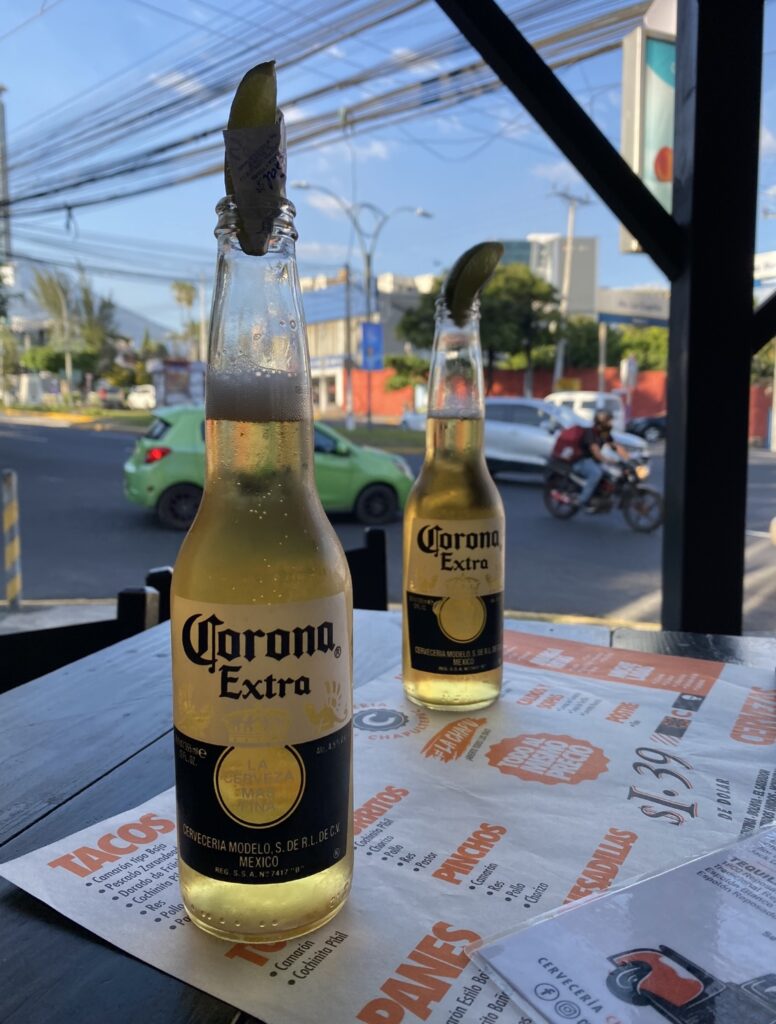
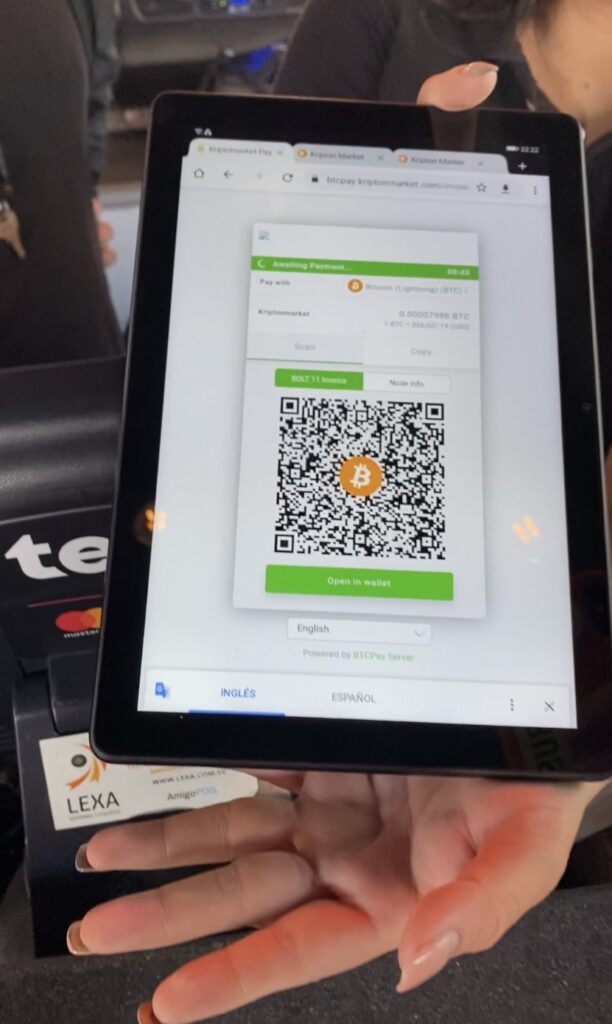
As we order two more beers, happy to be able to pay for them instantly, my mind races to Jack Mallers in tears on stage at the Bitcoin Conference in Miami, as he announced to the world that he had worked hard to lift the Salvadoran people out of poverty through Strike’s technology. Is that really what is happening?
On the way back we pass a passerby. His t-shirt displays a large Bitcoin logo with the words “El Salvador Bitcentenario”. We stop him, take his picture and he smiles happily at us shouting “viva Bitcoin“.
For the moment the interaction between Satoshi Nakamoto’s invention and the first country to declare it legal tender remains a puzzle for us. The good news is that we still have a lot of time ahead of us to try to solve it.
